UNIVERSE BEFORE TIME
All About Space UK
|Issue 157
Could the existence of a mirror-image cosmos before the Big Bang solve some of the biggest mysteries in astronomy?

Our universe encompasses everything around us. Its laws of physics control every possible interaction, from the gravitational attraction that keeps planets in orbit around the Sun to the complex chemistry that gives rise to life. But for astronomers and physicists there are still some big questions about why the universe is the way it is. One of the most famous is the mystery of dark matter, which only makes its presence felt through the influence of its gravity. Another is the dominance of a certain set of subatomic particles - the familiar ones such as electrons, protons and neutrons that we call 'matter' when there was nothing in the Big Bang itself to prevent the formation of equal amounts of 'antimatter.
A new theory developed by two Canadian physicists suggests a radical new way of looking at the universe, along the way offering solutions to these and other major questions. According to Neil Turok and Latham Boyle of the Higgs Centre for Theoretical Physics, we may be looking at one aspect of a universe of two halves. Boyle and Turok's theory, developed with Kieran Finn of the University of Manchester, originates from questions of symmetry. In physics, a symmetric process is one that produces the same result if the values of one or more properties involved are flipped or reversed. A process such as a simple interaction between particles may be symmetric under different transformations of this kind, and as a broad rule of thumb, as structures become more complex they become less symmetric.

Denne historien er fra Issue 157-utgaven av All About Space UK.
Abonner på Magzter GOLD for å få tilgang til tusenvis av kuraterte premiumhistorier og over 9000 magasiner og aviser.
Allerede abonnent? Logg på
FLERE HISTORIER FRA All About Space UK
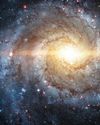
All About Space UK
MYSTERIES OF THE UNI WHERE ARE ALL THE SPIRAL GALAXIES?
There are far fewer spiral galaxies than elliptical ones in the Supergalactic Plane, and scientists are keen to discover why
7 mins
Issue 161
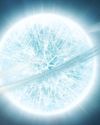
All About Space UK
ZOMBIE STARS
+10 OTHER TERRIFYING SPACE OBJECTS
8 mins
Issue 161

All About Space UK
HOW TO BEAT LIGHT POLLUTION
Thought it was impossible to observe the wonders of the night sky from towns and cities? Think again. Follow our tips and tricks on successfully observing through sky glow
2 mins
Issue 161
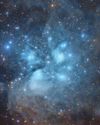
All About Space UK
15 STUNNING STAR CLUSTERS
These beautiful stellar groupings are spattered across the cosmos
8 mins
Issue 161
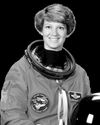
All About Space UK
Eileen Collins "It was a difficult mission...we were the first to see Mir"
Having served as both the first female pilot and first female commander of NASA's Space Shuttle, Collins boosted the involvement of women in space exploration to a whole new level
9 mins
Issue 161

All About Space UK
MARS LEAKS FASTER WHEN IT'S CLOSER TO THE SUN
The Red Planet has lost enough water to space to form a global ocean hundreds of kilometres deep
2 mins
Issue 161
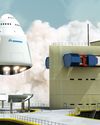
All About Space UK
FUTURE TECH KANKOH-MARU
This ambitious reusable spacecraft will be capable of taking 50 people to and from orbit
2 mins
Issue 161

All About Space UK
THE FINAL FRONTIER
Beyond the reach of the Sun is a fascinating region of the cosmos that were only just beginning to explore
8 mins
Issue 161
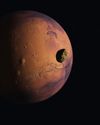
All About Space UK
A long-lost moon could explain Mars' weird shape and extreme terrain
A long-lost moon could explain why Mars is so different from the other rocky planets in the Solar System. Today Mars has two tiny moons.
2 mins
Issue 161
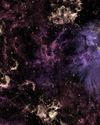
All About Space UK
A sprinkling of cosmic dust may have helped kick-start life on Earth
Cosmic dust may have helped kick-start life on Earth. New findings challenge a widely held assumption that this wasn't a plausible explanation.
3 mins
Issue 161
Listen
Translate
Change font size

